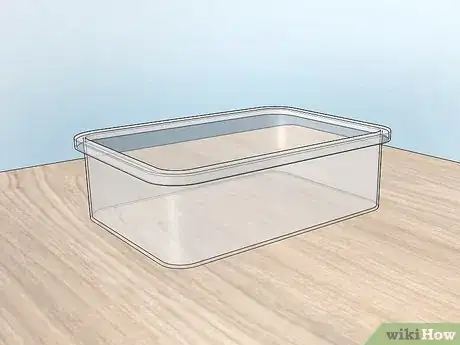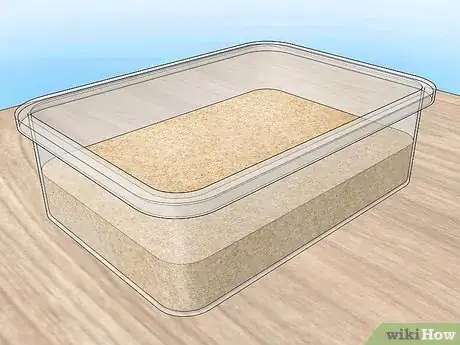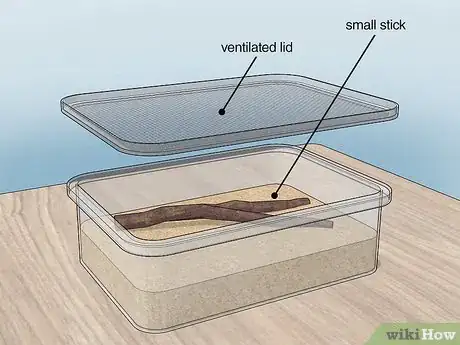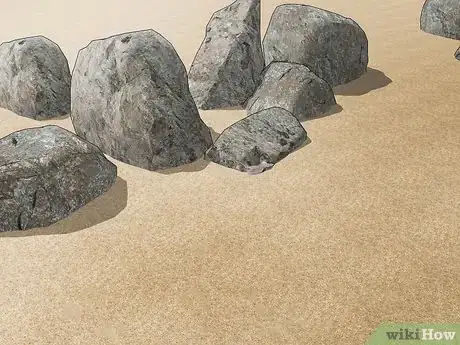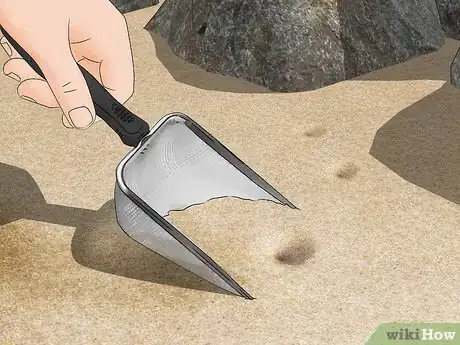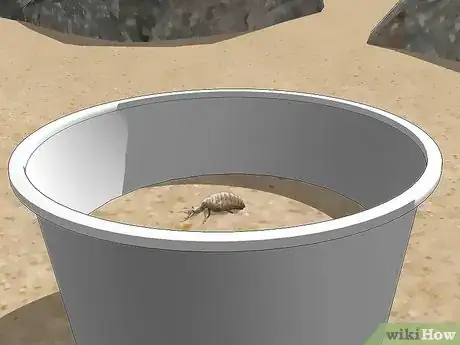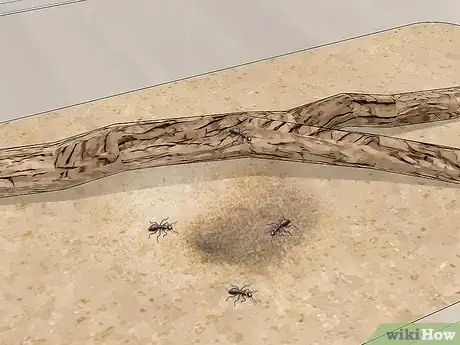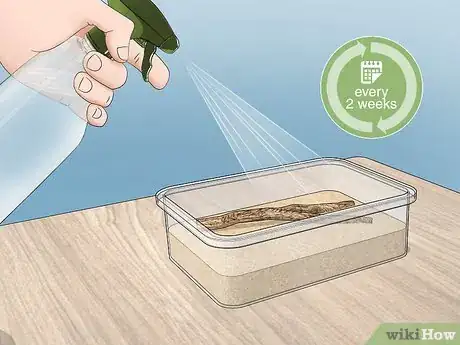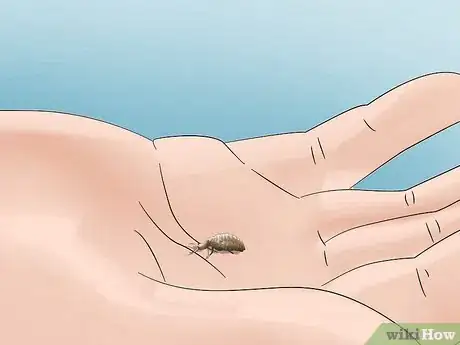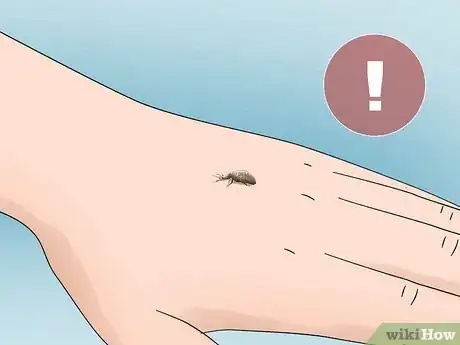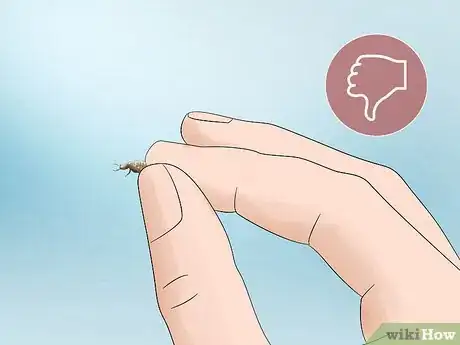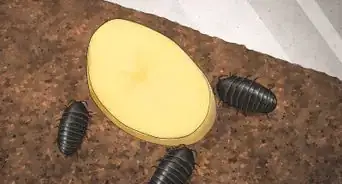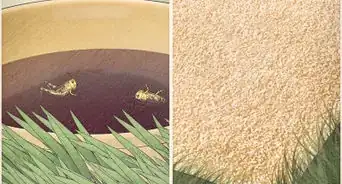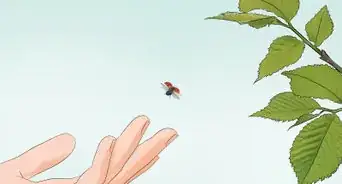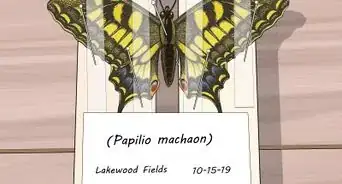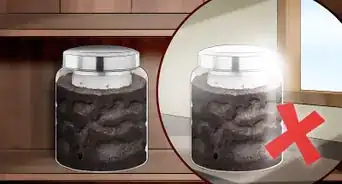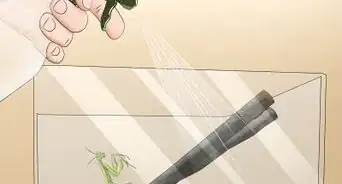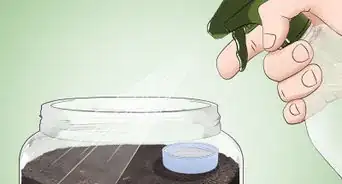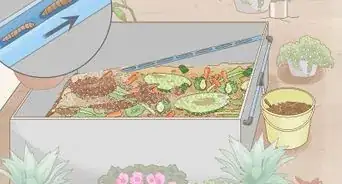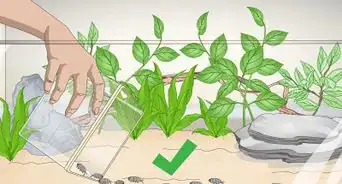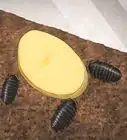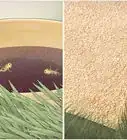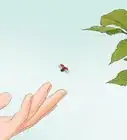This article was co-authored by Shweta Sharma. Shweta Sharma is a Biologist with the U.S. Environmental Protection Agency (EPA). With nearly ten years of experience, she specializes in insect management, integrated pest management, insect behavior, resistance management, ecology, and biological control. She earned her PhD in Urban Entomology and her MS in Environmental Horticulture from the University of Florida. She also holds a BS in Agriculture from the Institute of Agriculture and Animal Sciences, Nepal.
This article has been viewed 45,920 times.
There are all kinds of unique pets you can have. Antlions are an insect found all over the world, but especially in dry and sandy areas. In North America, they are sometimes nicknamed “doodlebugs” for the circular patterns they create in the sand. If you’re interested in getting an insect as a pet, an antlion may be an ideal pet for you. Make sure to care for this insect by creating a habitat, finding and bringing it home, and feeding and caring for it.
Steps
Creating an Antlion Habitat
-
1Find a good container for the antlion. Antlions are very active diggers, so make sure they have enough space to dig out a pit for their prey.[1]
- Use a plastic cup or a similar small plastic container. It should be clear so you can observe the antlion. Make sure it’s at least 4 inches across. Wash your container with lukewarm water and non-toxic detergents.
- Order an antlion den or Zen garden. You can search online if you'd prefer to purchase a premade habitat, such as an antlion den.
- Make sure your antlion environment has enough space. As antlions get bigger, they will need more space to dig and build their “den”.
-
2Fill your environment with fine substrates such as sand or sugar. Antlions can survive in any environment, though sand and dirt is its natural home.[2]
- Filter out your substrate, especially if you’re using anything that may have rocks or clumps of dirt. Antlions can remove any large blockages, but it will be easier for them to have a smooth and consistent place to live.
- Fill your environment about halfway with sand. Make sure the antlion is not smothered by the sand and has enough space to build a pit.
- Make sure the diameter across the level of the sand is at least 4 inches. This will make sure your antlion has enough space to build their pit.
Advertisement -
3Prepare the habitat for your antlion’s cocoon stage. If you want to keep an adult antlion, make sure you have covered the habitat so it won’t escape. Also, put a small stick in the sand for it to perch on so its wings will develop properly.
- Recognize when your antlion stops eating. This is a clear sign that they are beginning their pupa stage.
- Antlions spin a cocoon under the sand in order to become an adult. This stage will last approximately 3 weeks.
- When antlions emerge as an adult, they will have wings. Make sure you have prepared their environment so they cannot fly away and have somewhere to perch.
- Cover the habitat with a ventilated lid or net so the adult antlion won’t escape. They will fly out of the habitat if you’re not careful and they can hurt themselves outside of their habitat.
- Free your antlion when it becomes an adult so it can procreate. Adult antlions will grow too big for your habitat. This will enable it to reproduce and live out its relatively short life.
Finding and Bringing Home Your Antlion
-
1Check sandy areas such as playgrounds or beaches. Antlions don’t like people, so avoid well-trodden areas. Instead, try to find relatively secluded areas to find antlions.
- Find secluded sandy areas. Antlions will not be found in the middle of a busy beach or playground.
- Look for cone-shaped pits. They should look like hollow cone with a hole in the middle like a funnel. This is a clear sign of nearby antlions.
- Antlions can live in many other kinds of substrates. Check out other areas with a lot of dirt if you don't have any sandy areas nearby.
-
2Scoop out the pits with a sand sifter. You may have to try multiple times to make sure you find a living antlion larva.
- Use the scoop near the antlion pit. They may not be in the pit at the time, so you may need to try around the pit as well.
- Carefully sift out the sand. Make sure you don't hurt the antlion by being too rough with the sifter.
- Continue using the sifter in the area until you find the antlion. Stay attentive, since the antlion is the same color as its sandy environment.
-
3Put the antlion in a temporary container. Make sure it’s secure and safe, so you can get it home.
- Bring a small cup or other container. Fill it with sand from the area where you found the antlion. Keep your antlion habitat along with your antlion inside a dark area. These habitats may be the best designed for your antlion.
- Don’t worry if the antlion is on its back and playing dead. In a few moments, it will get up and try to bury itself again. [3]
- Once you get the antlion back to your home, put it in its environment. Let the insect get used to its new home for at least 24 hours.
- Be careful when opening the package when it arrives. You don't want to injure the antlion.
- Once the antlion is out of the box, make sure to have its habitat prepared and ready. The antlion will need time to adjust after being shipped.
Feeding and Caring for Your Antlion
-
1Feed your antlion. Antlions are known most for eating ants, but they can also eat smaller insects. Make sure to feed them at least one ant twice a day.
- Give your antlion ants. Ants are the most common food for antlions.
- Make sure not to give them any ants that are too big. Gather relatively small ants near where you found your antlion.[4]
- Supply your antlion with fruit flies or mealworms. Give them small amounts so they are able to eat and digest the smaller insects.
- Feed the antlion aphids, mosquito larva, or pinhead crickets. These are also good insects that are small enough for your antlion.
-
2Don’t worry about supplying the antlion with water. Antlions get most of the water they need from their food.
- If you are worried about your antlion getting enough water, you can mist their sand every two weeks.[5]
- Make sure not to flood the antlion habitat if you mist their sand. Antlions can drown, especially in their pit.
- Check on your antlion to make sure it’s getting enough food. If not, it may also not be getting enough water.
-
3Pick up your antlion. You can pick up your antlion and hold it in the palm of your hand. Just be careful to avoid being bitten or harming your antlion.
- Stretch your palm and create a flat surface. Make sure you don’t have any folds of skin for antlions to grasp onto.[6]
- Transfer your antlion to your other palm if they wander towards the edge of your palm. Keep your other palm flat and stretched as well.
- Keep some sand on your palm so the antlion thinks it’s on the ground. Antlions feel most comfortable in sand.
-
4Avoid antlion bites. While antlions rarely bite, they occasionally bite when they feel threatened. Keep the antlion in a comfortable environment when you pick it up.
- Keep them in the palm of your hand. Don’t let the antlion move to the back of your hand, since it may realize it’s not on the ground.
- If the antlion does bite you, stay very calm. Put the antlion back in its habitat. Do not move your hand rapidly since you can harm the antlion.
- Antlion venom causes a sharp, burning sensation. It will last for several minutes, but does not have long-term effects.
-
5Be gentle. Antlions have bodies that are very vulnerable. Try to not be too rough when handling them.
- Do not pick up antlions with your fingers. You can crush the antlions by doing so.
- If you want to pick up the antlion, place your hand in their habitat with some sand on it. Let the antlion come to your flat palm.
- Antlions in classrooms are especially at risk. Tell children to observe proper antlion handling or do not let them touch the antlion directly.
Community Q&A
-
QuestionIn which country can antlions be found?
 Community AnswerThere are more than 2,000 species and they are found all over the world, mostly in warmer climates.
Community AnswerThere are more than 2,000 species and they are found all over the world, mostly in warmer climates. -
QuestionWhere can antlions can be found?
 Community AnswerAntlions can be found in sheltered, sandy areas such as wooded dunes, open forest floors and dry, tree-lined river banks. They can also be found in the sandy soil of flower beds, under hedges or eaves, in undeveloped city lots and under buildings set on piers.
Community AnswerAntlions can be found in sheltered, sandy areas such as wooded dunes, open forest floors and dry, tree-lined river banks. They can also be found in the sandy soil of flower beds, under hedges or eaves, in undeveloped city lots and under buildings set on piers. -
QuestionDo I need to keep them in sunlight?
 Community AnswerNo. Insects don't require light for vitamin development, so as long as they have enough light to see properly, they should be fine.
Community AnswerNo. Insects don't require light for vitamin development, so as long as they have enough light to see properly, they should be fine.
Things You'll Need
- Container such as a plastic cup
- Sand or Sugar
- Antlions
- Live foods such as ants for the insect.
Expert Interview

Thanks for reading our article! If you'd like to learn more about antlions, check out our in-depth interview with Shweta Sharma.
References
About This Article
To find and care for an antlion, or doodlebug, start by preparing a container to keep it in. For the best view, choose a clear container, and make sure it's at least 4 inches across as well as deep enough for the antlion to dig and build its den. Once you've chosen your container, look for antlions somewhere sandy, like the beach, and catch one using a sand sifter. After you've added the antlion to your container, feed it small ants from the area where you found it, as well as the occasional fruit fly, mealworm, or mosquito larvae. For more tips, including how to avoid antlion bites, scroll down!
